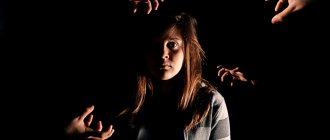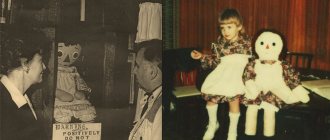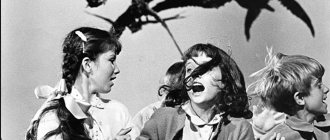- Causes and symptoms of pilaphobia in young children
- Causes and symptoms of pilatophobia in adolescents
- Treatment with psychoanalysis
- Independent elimination of fear in one-year-old children
- Art therapy
- Conclusion
Fear of balls occurs in teenagers and young children. In psychology, its name is pilaphobia. The most common cause of this phobia is physical trauma. A simple hit with the ball to any part of the body is enough. Most often, blows to the head are remembered.
Pilaphobia - fear of balls
Psychoanalysis and cognitive behavioral therapy will help you get rid of fear. In the first case, the patient copes with his problem independently. Therapy is needed when the phobia is pronounced and cannot be self-medicated.
Causes and symptoms of pilaphobia in young children
Ball phobia is a consequence of childhood fear. Sloppy play on the playground, deliberate bad behavior of children, and inability to play with such an object are the main reasons. In children under 5 years of age, the musculoskeletal system is still poorly developed. They cannot control its work, so sudden movements like throwing a ball do not always work out successfully.
In children under 3 years of age, the main manifestations of fear are screaming and hysterics. The sight of any round object is enough to make a child afraid. Most often they are afraid of such balls: football, basketball, balloon, fitball.
Fitball is called a large ball for gymnastics with a baby. Fitball scares children with its size. Its average diameter is 65–90 centimeters. The kid tried to play with him, but it ended unsuccessfully. Or during the game the child hit the ball. Now he is afraid of repeating such an experience.
Such fear is not always associated with a round object. It is possible that the child hit or fell for another reason, but at that moment the ball was in sight. The baby remembered this and now he associates fear with this toy.
Symptoms of Pilaphobia
The presence of a phobia can be diagnosed by a number of symptoms that occur during a stressful situation with a ball:
- trembling in the body;
- trembling in hands;
- rapid pulse;
- holding your breath;
- glassy look;
- muscle stiffness;
- increased sweating;
- nausea;
- dizziness;
- hysterics.
Once a person is confronted with their fear, they may find it difficult to speak, they literally retreat into a corner and cannot do anything.
Such a problem must be dealt with, otherwise the injury will remain for life.
Fear manifests itself emotionally in children
Causes and symptoms of pilatophobia in adolescents
In children over 12 years of age, fear of balls arises from bad experiences in physical education classes or from playing in the yard. Most often, fear appears during football and basketball. In addition to throwing the ball, you need to think through a strategic move to get around your opponent. It is at such moments that a child can receive an unexpected blow.
A teenager is often frightened not even by the ball itself, but by the reaction of his peers to his fear. He is afraid of embarrassing himself again. The ball causes hysteria and panic. A panic attack gradually develops. The child does not admit his fear. When you see a ball, the following symptoms occur:
- sweating increases;
- pulse and breathing increase;
- health worsens;
- slight trembling and dizziness appear;
- the functioning of the musculoskeletal system is disrupted;
- muscle weakness appears;
- nausea, vomiting occurs;
- pressure decreases, etc.
Hysterics may even begin. A teenager may run away from the gym during physical education or refuse to continue playing on the court. If treatment is not started, the teenager will avoid such places and playing with the ball.
Bad experience causes fear of the ball in teenagers
Anxiety in teenagers
In adolescence, ball phobia in most cases begins in physical training classes. At this age it is very important not to be humiliated and rejected. Some children try to show their superiority over weak peers. The ball comes to their aid. A teenager with poor physical fitness cannot resist the blow of a ball flying with a terrifying appearance of a “meteor” right in his face. The result is a broken nose, a concussion and a panicky fear of the ball for the rest of my life.
Treatment with psychoanalysis
The psychotherapist asks the child to think about what exactly frightens him about the ball: its size, color scheme, functions, weight. It happens that the patient is afraid of receiving physical injury or spoiling his appearance (getting a bruise, abrasion) due to the impact of this object. Then you should think about the probability of the event that the child is afraid of.
The doctor helps the teenager develop his own safety precautions. You can cover yourself from the ball with a large object: a backpack, a bag. Hand protection helps. The main task is to prevent the occurrence of an alarming event.
After the technique has been developed, the patient should try out his technique. It is worth remembering that it will only help overcome the phobia of the ball in the gym or other enclosed space. Adjustments should be made along the way. After 2–3 months, the need for safety precautions will disappear.
The child will understand that there is no need to be afraid of the ball. You just have to learn how to play with it correctly. You need to practice your throwing and hitting skills. Then the child will be confident in himself and will be able to resist the object of fear.
The therapist will ask the child to analyze the ball that frightens him.
Independent elimination of fear in one-year-old children
The first correct decision is to remove the irritant from the child’s field of vision for some time (1–3 months). Show your child the ball in a neutral form: pictures, cartoons. Visit the playground with your baby. He will see that most children play with such a toy. He will remember their reaction - laughter, fun, joy. The baby will understand that playing with this object is not scary and will show interest in it.
Other ways to eliminate fear:
- Throw a crumpled piece of paper at the ball. The child will see that there is no reaction from the object of fear and will stop being afraid.
- Buy a small bright ball with a diameter of up to 15 cm. Start playing together with your baby. Throw the ball lightly to him. Later, find a copy of the soccer ball, only in a smaller size. Then you can connect a large fitball to the games. The main thing is to make the child laugh and entertain in the process. He will remember that such games are fun, funny, amusing and not painful.
- Together with your child, paint the ball with funny faces. If the girl is afraid, draw flowers, fairies, animals on the ball. The main thing is that they evoke only pleasant emotions in the child.
If your baby is afraid of the fitball, you should remove the fitball for a while. Later, try jumping on it yourself, while being in the child’s field of vision.
During the process, you need to smile, show that the toy does not cause fear in your mother, but only joy and pleasure. Then take the baby in your arms and touch the surface of the fitball with his feet. You can roll him around and try to sit him on top.
Joint games with fitball will help. It is necessary for the mother and baby to sit down and lightly jump and swing on the fitball. At this moment it is important to amuse the child. It is necessary that there is free access to the toy. It happens that after such actions the baby becomes interested in the toy.
The child should be shown how other children play with the ball.
Treatment methods for pilaphobia
The main task of parents is to see the emerging problem in time and understand the cause of its occurrence. In severe cases, you need to consult a specialist. But in the initial stages of the disease, parents themselves can help their child. Below we will look at some methods that will help get rid of a phobia.
To eliminate fear, the child needs to make sure that the ball will not cause him pain if he touches it. To do this, you need to throw a stick or other small object at the object of fear and, seeing that there is no reaction, the baby will understand: the ball does not pose a threat to him.
You can make a small ball out of white paper and draw a cute smiling face on it with your child. Fear will disappear as soon as it takes shape and will cause positive emotions.
To eliminate the fear of the fitball, you need to unobtrusively show how the mother practices on the ball, you can take the child in your arms and jump lightly on the fitball, the mother should smile and talk affectionately to the baby.
Ball training
To eliminate the fear of the ball, you need to teach your child how to handle it: catch it and throw it.
Play therapy can help parents deal with their child’s phobia. For children, contact with the world occurs through play, so you can dramatize in a playful way the situation that gave rise to fear, and give the child the opportunity to react at that moment to the situation with the ball.
To solve a teenager’s problem, a confidential conversation with one of the parents can help. You can also use the following technique: the teenager should close his eyes, imagine the object of fear and how the ball is flying towards him, and then reduce this image to a point. This must be done twice a day, morning and evening, continuing for a month.
A psychologist can help overcome fear
In adulthood, if the child’s problem is already “rooted,” the help of a psychologist is needed.
He will help unblock his consciousness and teach him how not to be afraid of the subject of fear, the so-called blocks that the subconscious has developed after a stressful situation. Under the guidance of a psychologist, the patient imagines the objects that he fears most and tries to relax the muscles in these areas, alternately moving closer and further away from the source of fear. Alternating between a calm and anxious state of mind gives the child the opportunity to reconsider his attitude towards fear and helps him learn to control his reaction to a stressful situation.
Art therapy
The procedure includes:
- drawing;
- music;
- literature;
- needlework;
- singing;
- dancing.
It is important to choose something that brings pleasure to your baby and will help him calm down. To begin with, the doctor asks the child to draw a ball. It is important to pay attention to the color palette. It is necessary to analyze all the strokes, lines, and ornaments.
It happens that the picture, in addition to the subject of fear, depicts other objects, most often people. Based on this, the psychotherapist suggests that the fear is caused by the bad influence of the older child. Have the patient describe and display the dimensions of the object.
Another method is to act out a theatrical performance with your child. In the process, the baby will be able to accurately reflect his emotions, worries, and experiences when he sees the ball. Let him try to be the object of fear himself. This way the doctor will understand what exactly the patient is afraid of. Maybe it's not the ball, but another object.
The advantage of the technique is the absence of a negative impact on the small patient. The child will not understand that this is treatment. For him, art therapy is a way to have fun.
Dance and theater are an excellent method of art therapy
What is the fear of wild animals called?
The fear that a person experiences of wild animals is called agrizoophobia. The fear of wild animals is common to everyone. If a person meets wolves or a bear near a raspberry bush in the forest, he will run away. Among people with agrizoophobia there are many people who have never seen wild animals. A phobia can arise after a person has seen a picture of a wolf tearing its victim apart.
People with agrizoophobia avoid visiting places where they can see wild animals. They will never go to the circus or the zoo: there they will have to face their fears. Agrizoophobes will not watch films and programs about animals, or read books and articles about them. A person suffering from a phobia does not have pets, because they have similarities with their wild counterparts. A cat resembles a tiger and a lynx, a dog resembles a wolf. Such people are even afraid of stuffed animals and animal skins. There is a name for this specific phobia: doraphobia. This is a fear of the fur and skin of animals. An agrizoophobe lives better and easier in a big city, because here encounters with animals are excluded.
This phobia can be asymptomatic and suddenly manifest itself as a seizure at the sight of an animal. This will come as a surprise to the person and his friends. This situation can be provoked by a story about a wild animal. An agrizoophobe will hear it from a participant in an animal attack or a witness. A panic attack can be triggered by the cry of an animal - real or from a TV screen. A warning about the possible danger of an animal attack can cause fear.
Agrizoophobia prevents a person from living normally: his thoughts are confused, his speech becomes incoherent, there may be nausea and loss of consciousness.










